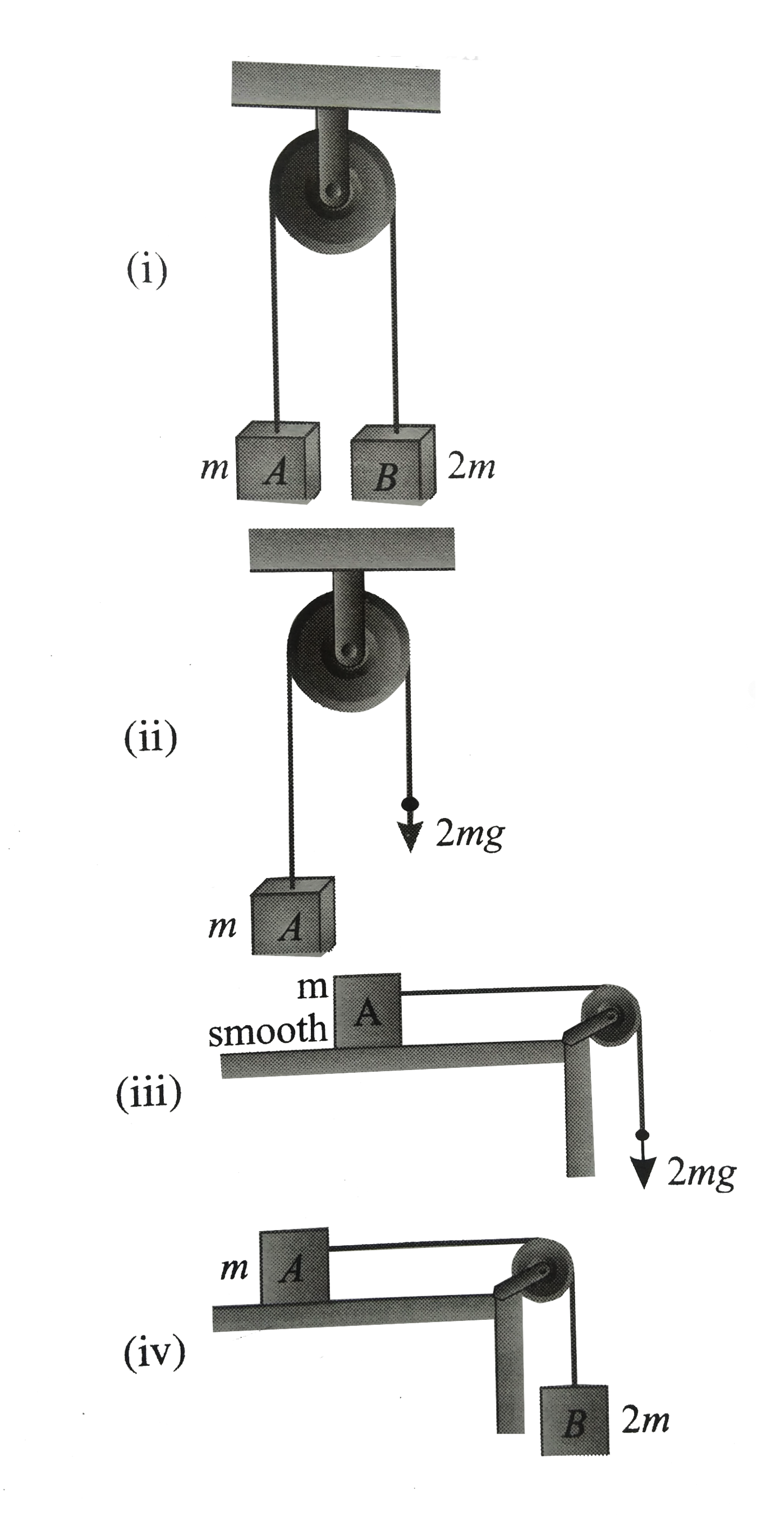 In which of the following cases the magnitude of acceleration of the block A will be maximum (neglecting friction, mass of pulley and string)
In which of the following cases the magnitude of acceleration of the block A will be maximum (neglecting friction, mass of pulley and string)
Method 1:




(##BMS_DPP01_DPP6.2_E01_451_S05.png" width="80%">

(i) Equation of motion of A,T−mg=ma
Equation of motion of B,2mg−T=2ma
From (i) and (ii), a=g3<br>(ii)HereT=2mg<br>EquationofmotionofA,T-mg=ma<br>om(i)and(ii).a=g<br>(iii)F.B.DofA<br>HereT=2mg<br>EquationofmotionofA,T=ma<br>From(i)and(ii),a=2g<br>(iv)F.B.DofA&F.B.DofB<br>EquationofmotionofA,T=ma<br>From(i)and(ii),a=(2)/(3)g
Topper's Solved these Questions
- BOOK - CENGAGE PHYSICSCHAPTER - CENGAGE PHYSICS DPPEXERCISE - single correct type14videos
CENGAGE PHYSICS DPP
- BOOK - CENGAGE PHYSICSCHAPTER - CAPACITOR AND CAPACITANCEEXERCISE - Integer5videos
CAPACITOR AND CAPACITANCE
- BOOK - CENGAGE PHYSICSCHAPTER - CENTRE OF MASS CONVERSATION OF MOMENTUM AND COLLISIONEXERCISE - Question Bank38videos
CENTRE OF MASS CONVERSATION OF MOMENTUM AND COLLISION
Similar Questions
Two blocks of equal mass are tied with a light string, which passes over a massless pulley as shown in figure. The magnitude of acceleration of centre of mass of both the blocks is : (neglect friction everywhere)
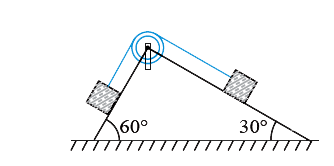 View Solution
View SolutionDetermine the magnitude of frictional force and acceleration of the block in each of the following cases :
 View Solution
View Solution
Knowledge Check
- Question 1 - Select One
The magnitude of difference in accelerations of block of mass m in both the cases shown below is
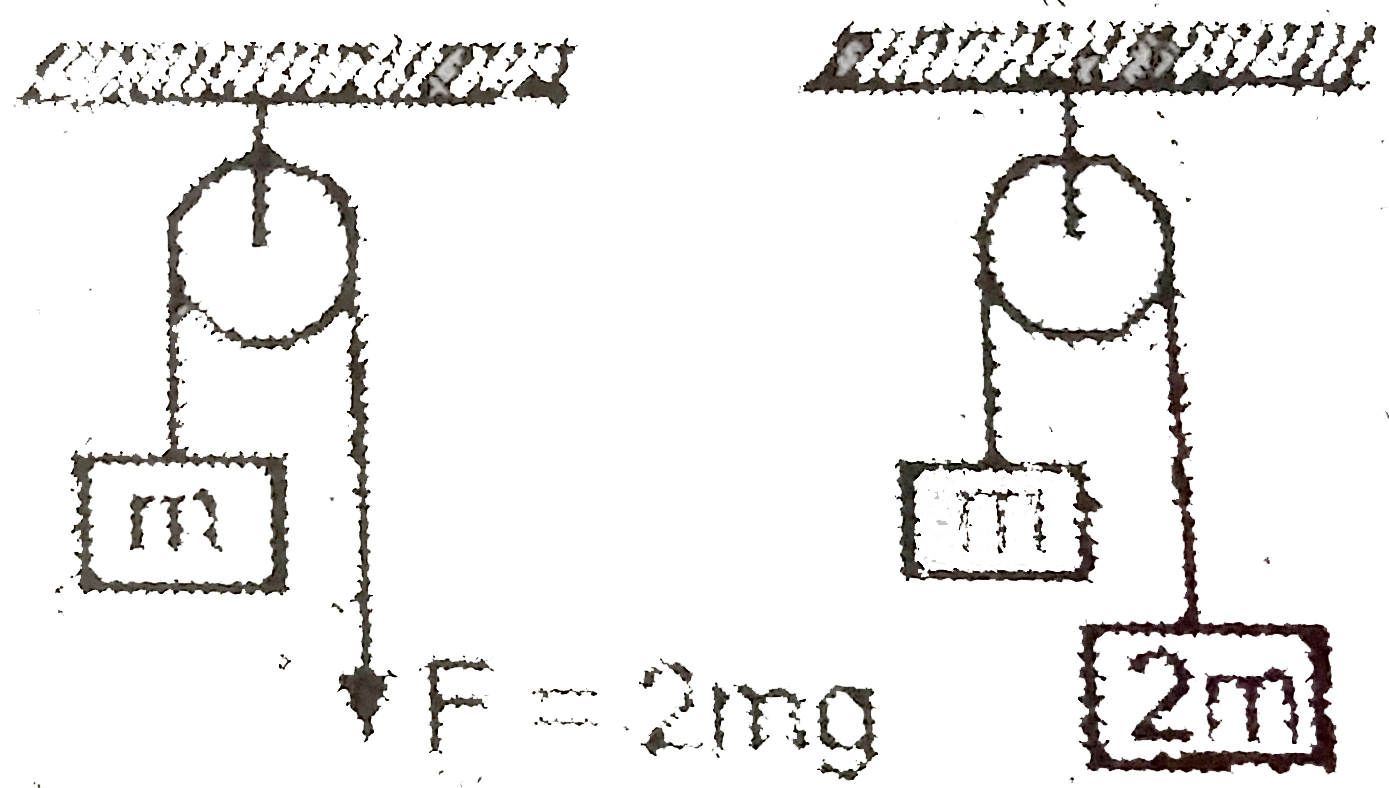 AgB2g3CzeroDg/31
AgB2g3CzeroDg/31 - Question 2 - Select One
A block of mass m is attached with a massless spring of force constant k. The block is placed over a rough inclined surface for which the coefficient of friction is μ=34. The minimum value of M required to move the block up the plane is (Neglect mass of string, mass of pulley and friction in pulley)
 A35mB45mC65mD32m
A35mB45mC65mD32m - Question 3 - Select One
If the string & all the pulleys are ideal, acceleration of mass m is :-
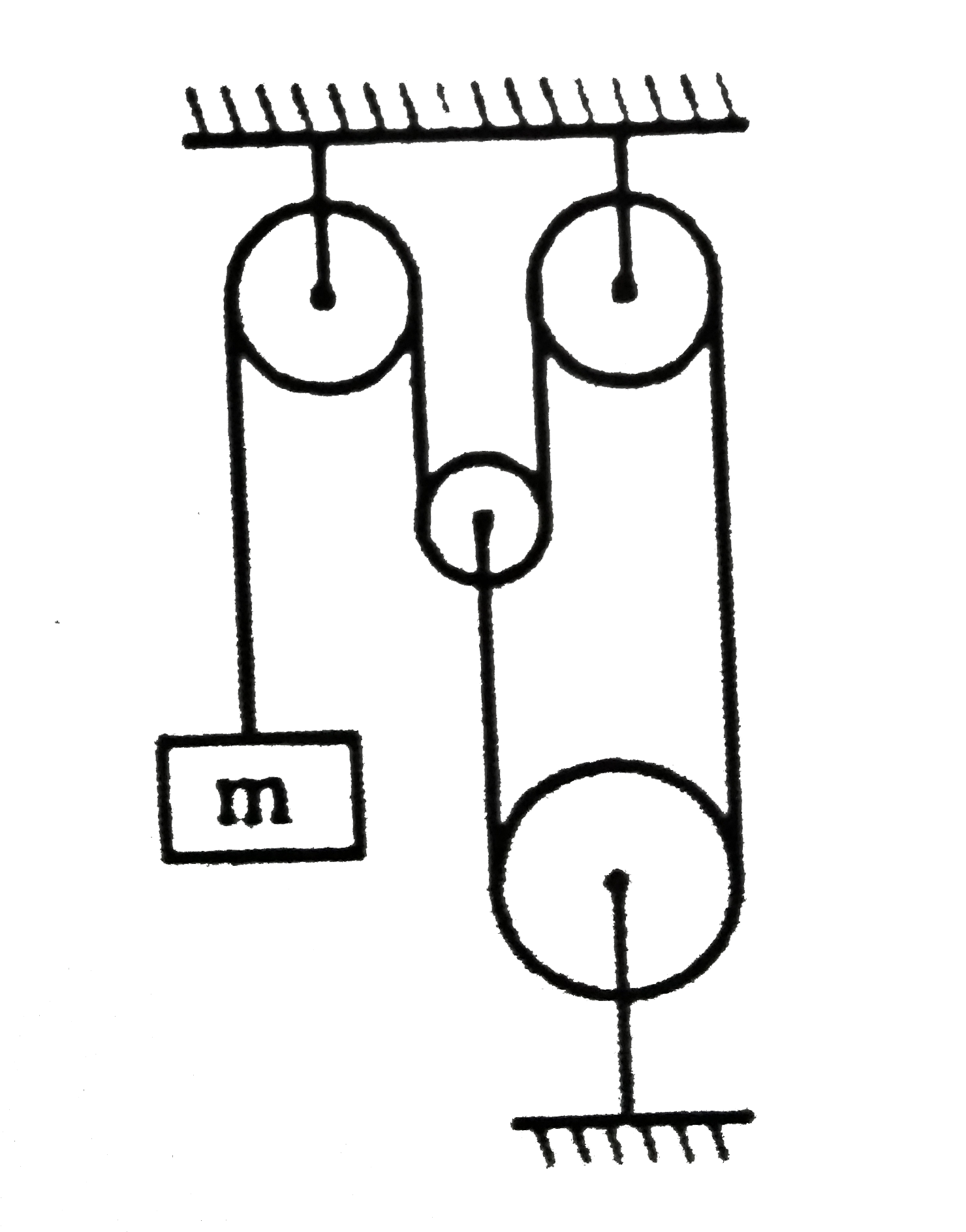 Ag2B0CgDdependent on m
Ag2B0CgDdependent on m
In terms of masses m1,m2 and g, find the acceleration of both the blocks shown in Fig. Neglect all friction and masses of the pulley.
View SolutionIn the figure given below, with what acceleration does the block of mass m will move? (Pulley and strings are massless and frictionless)
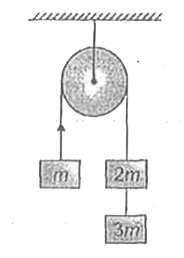 View Solution
View SolutionFind the acceleration blocks in fig. The pulley and the string are massless.
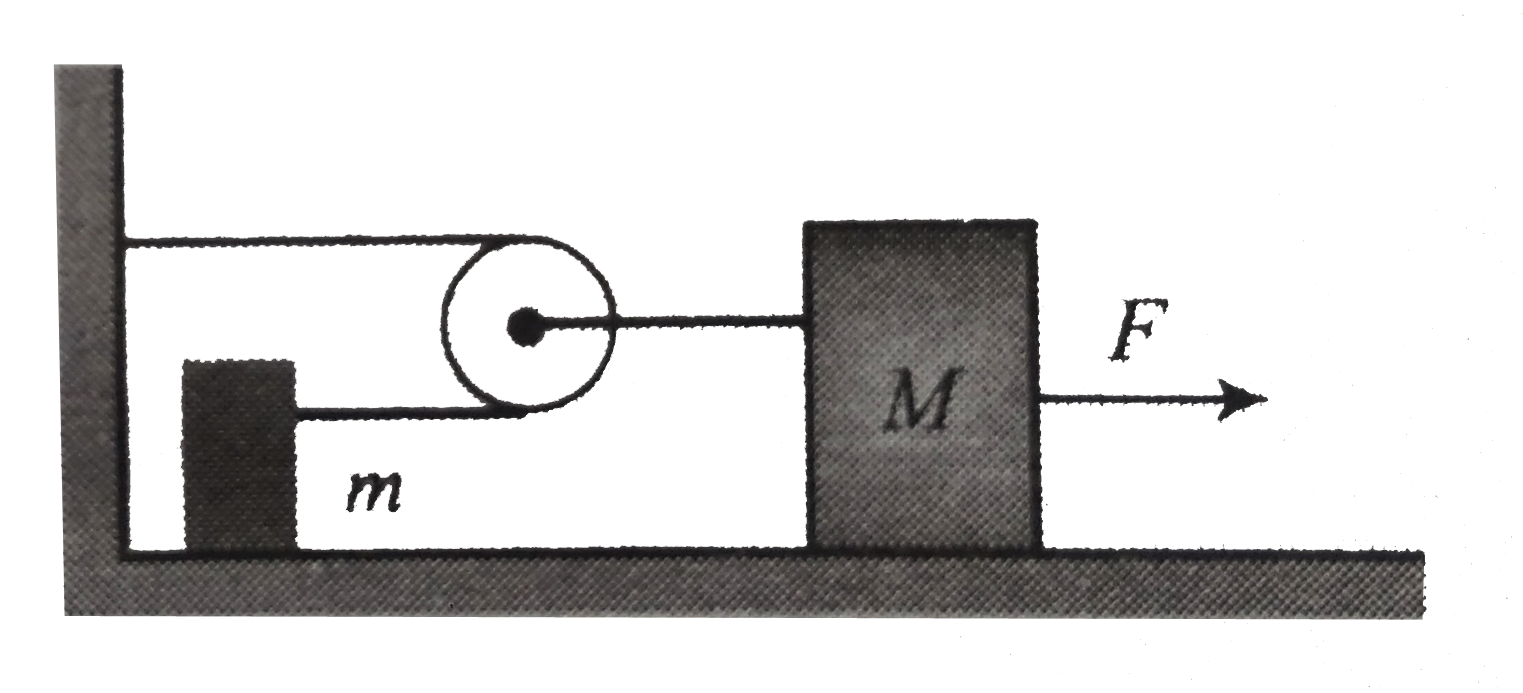 View Solution
View SolutionThe ratio of acceleration of pulley to the acceleration of the block is (string is inextensible).
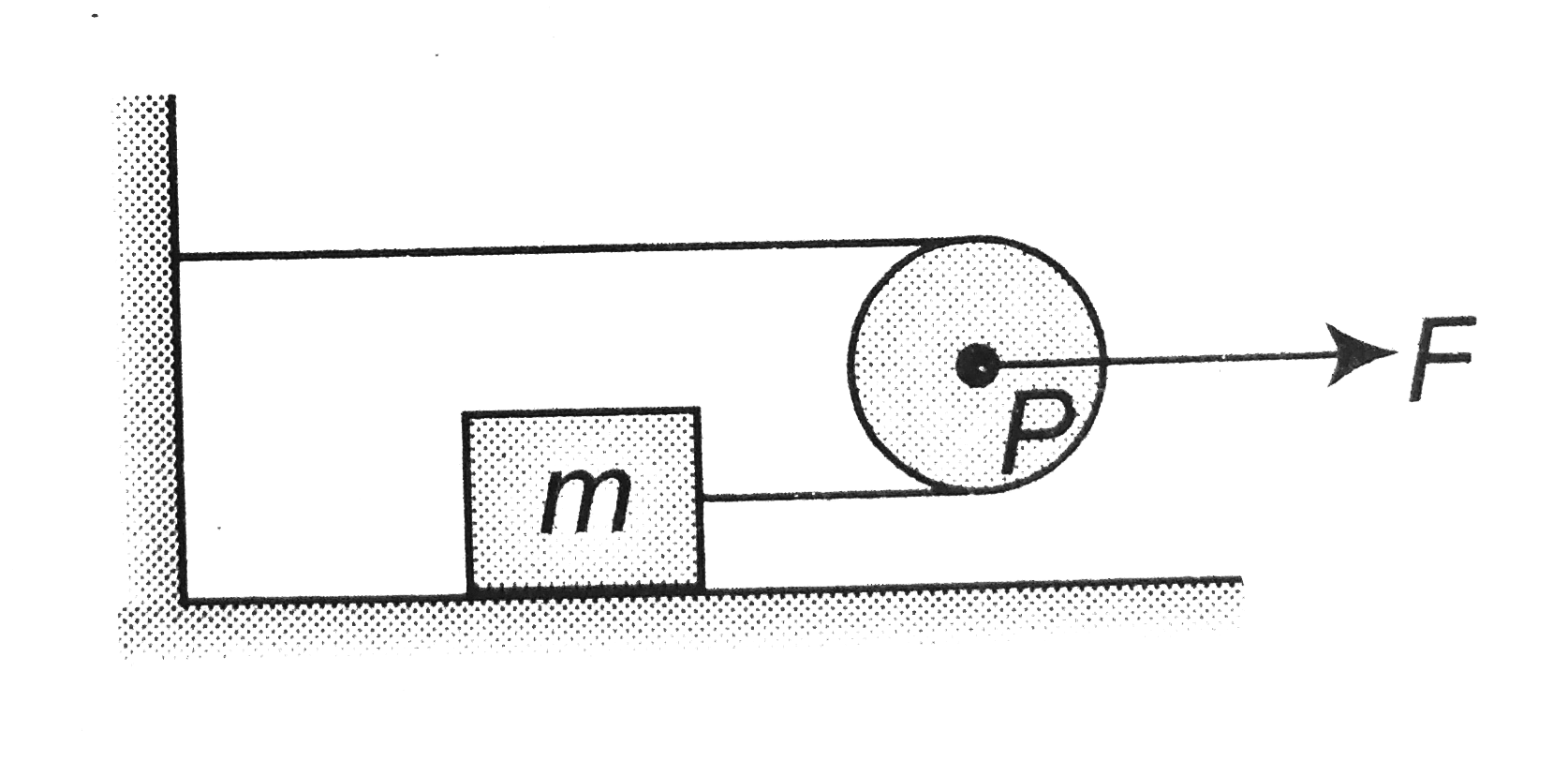 View Solution
View SolutionA block of mass m is attached with a massless spring of force constant k. The block is placed over a fixed rought inclined surface for which the coefficient of friction is μ=34 . The block of mass m is initially at rest . The block is mass M is released from rest with spring in unstretched state. The minimum value of M required to move the block up the plane is ( neglect mass of string and pulley and friction in pulley )
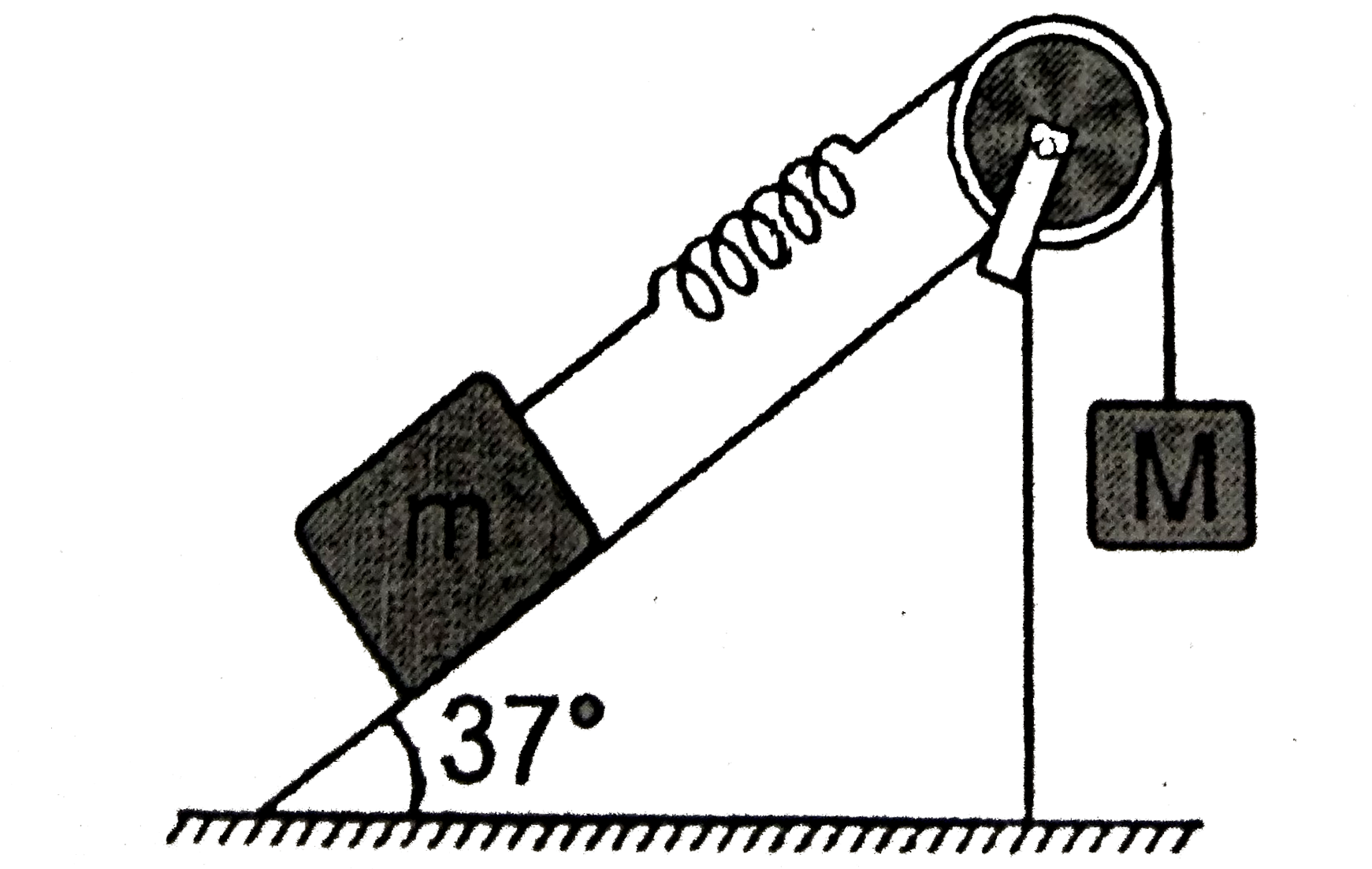 View Solution
View Solution

